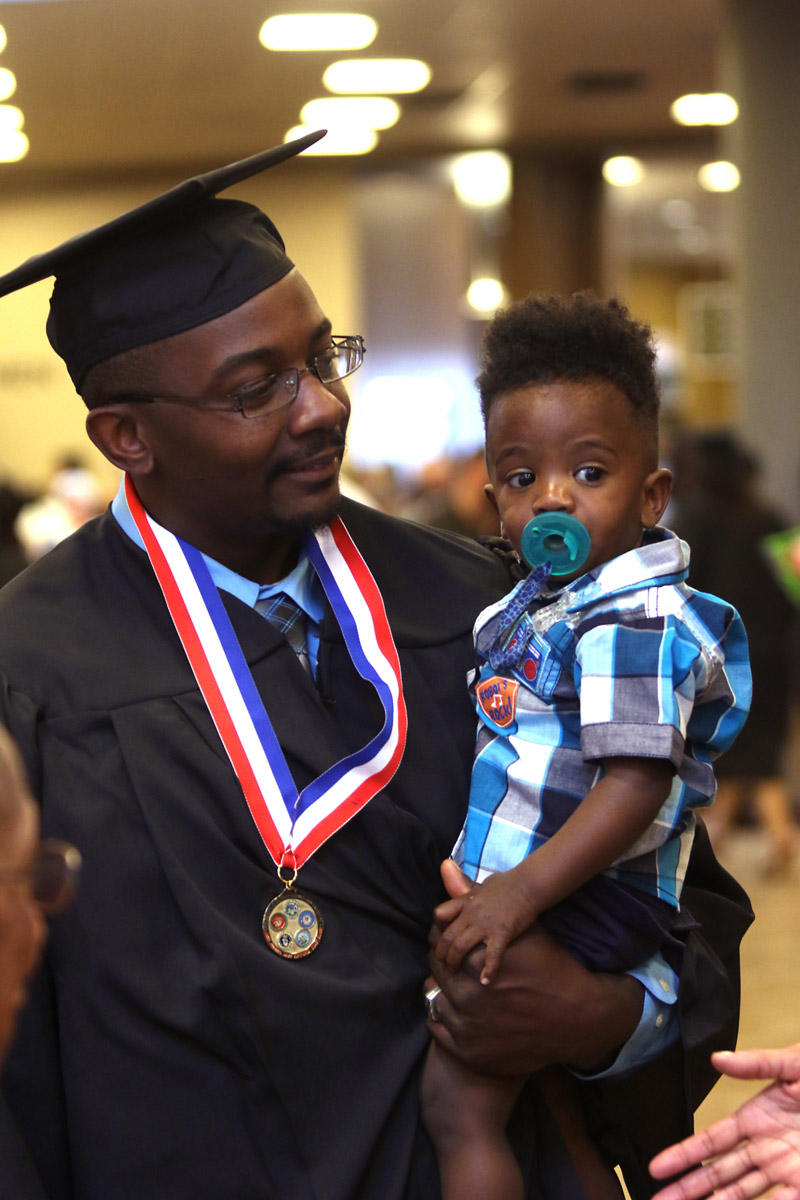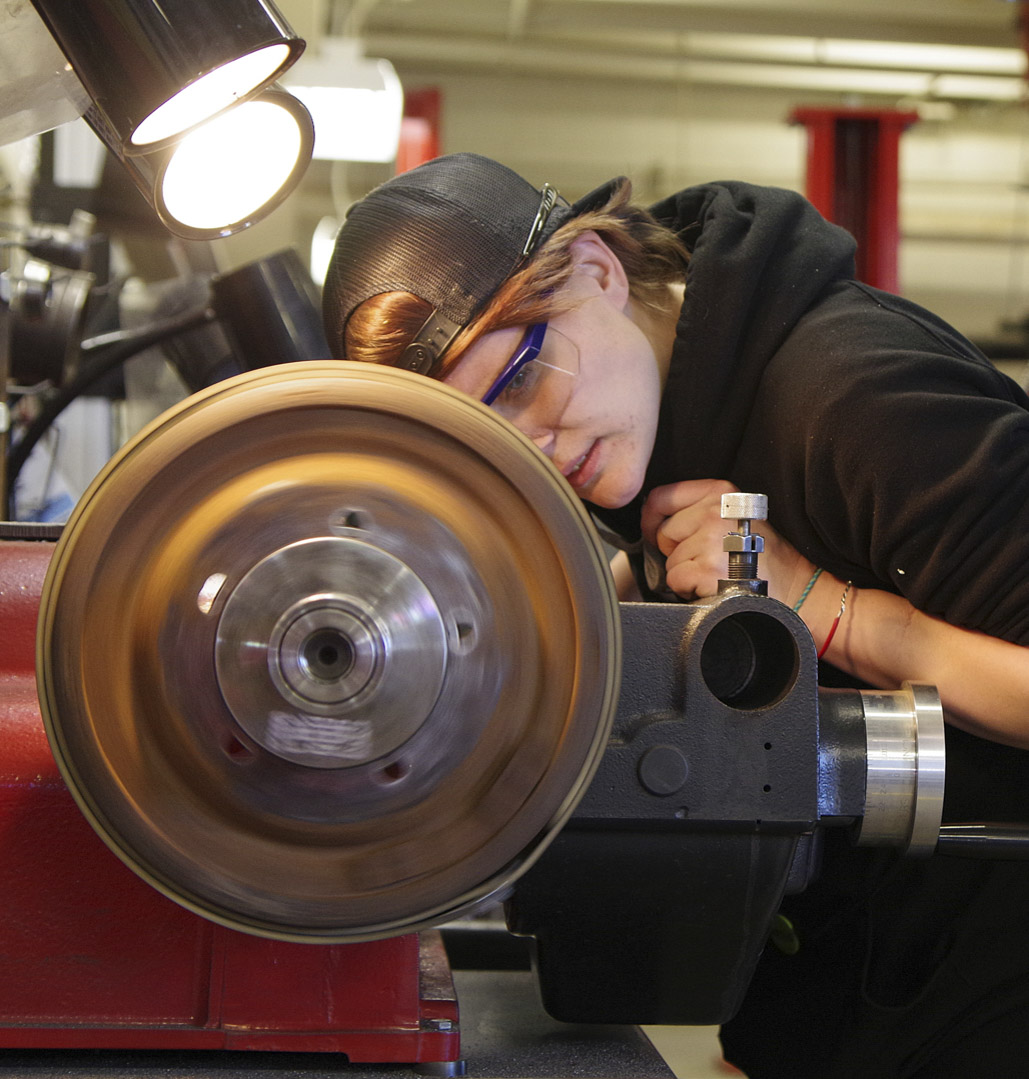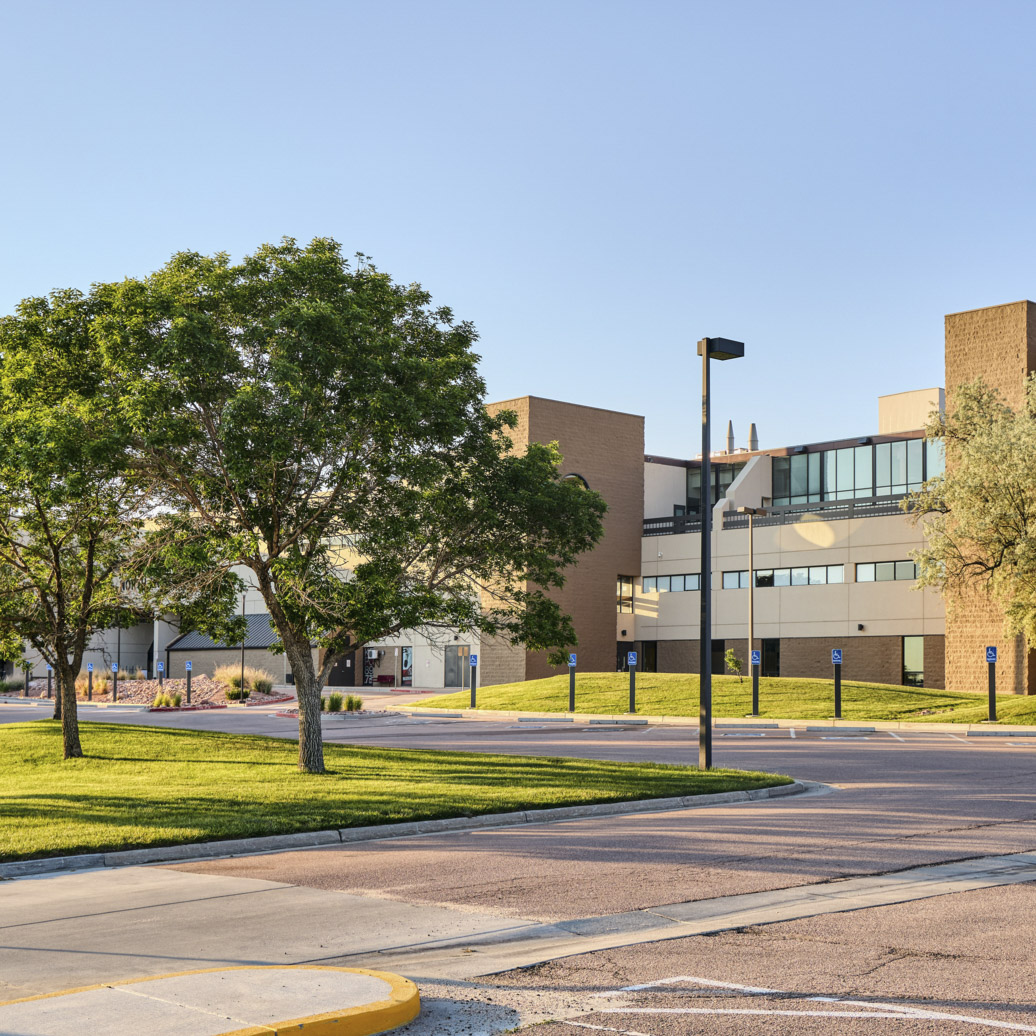You come to Pikes Peak State College wanting more. More than learning a skill. More than earning a degree or certificate. You come dreaming of a better life.
We take that charge very seriously. To help you get there, we start by reaching you where you are – physically, educationally, financially.
Four campuses and additional learning centers throughout Colorado Springs and many online options, along with day and evening classes, make PPSC adaptable to just about any lifestyle.
Meeting you where you are also means keeping within your budget. With tuition less than half of our university counterparts’ and millions of dollars in aid and scholarships available, PPSC should prove well within your financial reach.
Your specific path through Pikes Peak depends on your interests. Our advisors and online tools can help you navigate our 150-plus degrees and certificate programs, turning your passions into something tangible, something extraordinary: a fulfilling and rewarding career.
We have as many dreams here as we do students, and they come in every variety: high school grads, veterans, single moms, factory workers, jocks, artists, geeks, book worms and retirees from every race, ethnicity and age. Together, we create a supportive learning environment and a sense of belonging for those who want to build a better future while staying close to home and for travelers on their way from here to everywhere.
We are here for you.
At PPSC, we offer more paths to success than Colorado offers mountain trails.


Students succeed at PPSC
Our mission statement closely mirrors the statutory role and mission set forth in Colorado Revised Statutes § 23-60-201.
Our mission is to provide high quality educational opportunities to all with a focus on student success and community needs, including:
You can find. out more about our state system's mission here.
We value a community built on learning, mutual respect, and diversity.
$ million
Scholarships awarded annually
Transfer partners with Bridge to Bachelor's Program

In the late 1960s, Colorado Springs was on the move.
Fort Carson had long before traded donkeys for mechanized units, and Colorado Springs was growing from a modest tourist town to a modern city, powered by an ever-expanding military presence.
The post-World War II American Dream was spreading, thanks to a G.I. Bill® that funded higher education more than ever before. Baby boomers were becoming college-ready. Community colleges, which mixed academic and technical pathways, were the best investments cities could make.
Even though Colorado Springs was already home to the U.S. Air Force Academy, Colorado College, and the University of Colorado at Colorado Springs, a community college seemed a way to ensure that the boom would not go bust.
By 1968, El Paso County Community College (EPCC) opened, quickly dropping the cumbersome "county" from its name.
President Robert O. Hatton and three other staffers began the foundational work. As Hatton's executive assistant, Carol Van Lew recalls, “I was considering another offer to work for the president of a bank. But I was really excited about being involved in the development of a new college! Working with the first four was really exciting — to be in on the beginning of such a big endeavor!”
To call the college's beginnings humble would be an understatement. The original nickname was “Safeway U”—because one of its buildings was a former Safeway store at Robinson Street and 25th. That campus grew quickly to eight buildings. EPCC also “repurposed” other buildings around town for various functions. The dedication of the Administrative offices, at 5 W. Las Vegas St., took place Nov. 20, 1968.
Hundreds of people began their careers working for or as students of EPCC. Future Colorado Springs leaders Bill Hybl (chair and Chief Executive Officer of El Pomar Foundation), John Anderson (former El Paso County sheriff) and John Suthers (former Colorado Springs mayor) were among the early instructors.
In the mid-70s, EPCC began to move away from a scattering of buildings toward one large central campus.
EPCC negotiated for Ft. Carson surplus land (that the college had been leasing), and Congress approved. The Department of Defense sold the land to EPCC for $1 to support access for military students and their families.
College officials enlisted noted architect Clifford Nakata, a Japanese American who had suffered with his family in an internment camp during World War II, to design the campus in the popular brutalist architectural style. Nakata also designed the Pikes Peak Center, the downtown YMCA and the Pro Rodeo Hall of Fame.
One young man who worked on building that campus was Jim Johnson. He was 14 and working for his father, Gilbert Johnson, founder of GE Johnson Construction Company. Later president and CEO of his father's company, Jim and his foundation would be among the largest donors to the college's foundation, funding scholarships and the start of the college's construction program.
The new campus, dedicated on Aug. 18, 1976, received the name Centennial because of the U.S. Bicentennial and Colorado’s Centennial year. A couple of years later, the college got a new name, one that reflected the heights of its ambitions.
Pikes Peak Community College was born on March 21, 1978. As had the city before it, but also not without controversy, the college dropped the possessive apostrophe in Pike’s. (The name changed again, to Pikes Peak State College, in 2022, and the College’s mission was expanded to include the offering of bachelor’s degree programs).
The college's renewed ambition showed in its push to serve overseas students. With an Air Force contract, the college started an International Campus in Wiesbaden, Germany. It began with four courses, soon expanded to 26, and had plans to expand to 90 courses in seven European countries. Overseas enrollment waned, however, and PPSC scrapped the International Campus.
Closer to home, expansion continued. In 1986, PPSC opened the Downtown Studio Campus at 19 N. Tejon (now a People's Bank). Its location in the heart of the city inspired a natural affinity for the arts and humanities. It moved in 1993 to the former St. Mary’s High School, first leased and then acquired in 1993.
At the time the college was growing its downtown presence, the northern part of the county was sprouting suburbs filled with potential PPSC students. In 1986, PPSC began to use Rampart High School evenings and weekends as a north campus. In 1998, the college built the Rampart Range Campus, due east of the US Air Force Academy.
Through the following decades, with three major campuses and learning centers in District 49, Fort Carson, Peterson Space Force Base, and more, PPSC continued to grow.
This theme of partnership has woven through the fabric of the college from the beginning and continues to this day. The Care and Share Food Bank for Southern Colorado and Canvas Credit Union have helped PPSC feed students who are food insecure. United Way is helping students plug into a variety of vital support services. Monument Fire District and Black Forest Fire Rescue Partnered with PPSC to create a joint fire academy. The Better Business Bureau of Southern Colorado has joined PPSC on a Social Innovation program, training business majors on how to make money and make a difference at the same time.
With such partners, faculty, staff, and students, PPSC has become the largest, most diverse higher-education institution in Southern Colorado, serving nearly 18,000 students and making a significant impact on the local economy. Recent expansions include the 2021 opening of the Center for Healthcare Education and Simulation (CHES), which provides state-of-the-art training for healthcare students, and the 2024 launch of the Delta Dental of Colorado Oral Health Career Center, further expanding opportunities in the dental field.
All this started with such a simple concept: create a college to serve the needs of an increasing population while powering the development of a growing city. What a smart idea and a clever investment that turned out to be.
GI Bill® is a registered trademark of the U.S. Department of Veterans Affairs (VA). More information about education benefits offered by VA is available at the official U.S. government website at http://www.benefits.va.gov/gibil.

Pikes Peak State College (PPSC) was established as El Paso Community College in 1968 with the legislative mission to provide vocational and liberal arts programs to students from the Pikes Peak Region of Colorado. That same year, the College became a member of the Colorado Community College System (CCCS), the state's largest system of higher education, which oversees 13 community colleges and serves over 124,000 students annually. The CCCS mission is to provide an accessible, responsive learning environment where students can achieve their educational, professional, and personal goals in an atmosphere that embraces academic excellence, diversity, and innovation.
The State Board for Community Colleges and Occupational Education (SBCCOE) serves as the governing body for CCCS, providing oversight for PPSC and the other system institutions.
The State Board (SBOCCOE) delegates authority for hiring and firing presidents to the System Chancellor who oversees the day-to-day operations of the CCCS. The System Chancellor meets with the presidents weekly and produces an annual evaluation of each president and college. The Chancellor also participates in annual goal setting for each president and college in the system.
For more information on the SBCCOE and its policies, visit CCCS Governance.
In accordance with Board Policy 2-25, PPSC has an Advisory Council to serve as ambassadors between the College and the community. The council helps ensure that PPSC remains aware of local needs and supports connections for the college with employers, educators, and elected officials.
Through this structure, PPSC ensures collaborative governance that aligns institutional priorities with community needs, workforce demands, and the overarching CCCS mission.
For more details, see CCCS Board Policies and Procedures.
PPSC has been accredited by the Higher Learning Commission (HLC) since 1975 and officially joined the Open Pathway in 2016.